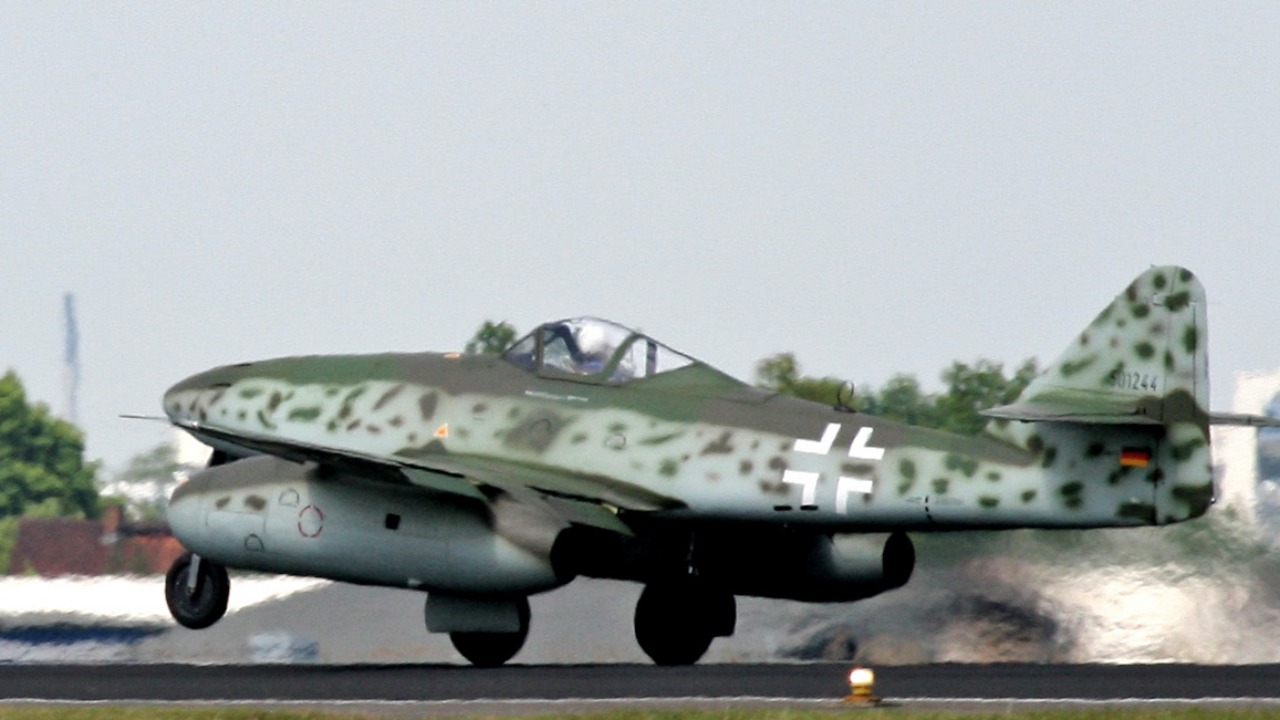
During World War II, the introduction of the Messerschmitt Me 262 jet fighter by the German Luftwaffe marked a significant turning point in aerial combat. Known for its unprecedented speed and firepower, the Me 262 conducted a series of ambushes that redefined air battle strategies and forced the Allied forces to rethink their tactics.
The Rise of the Me 262
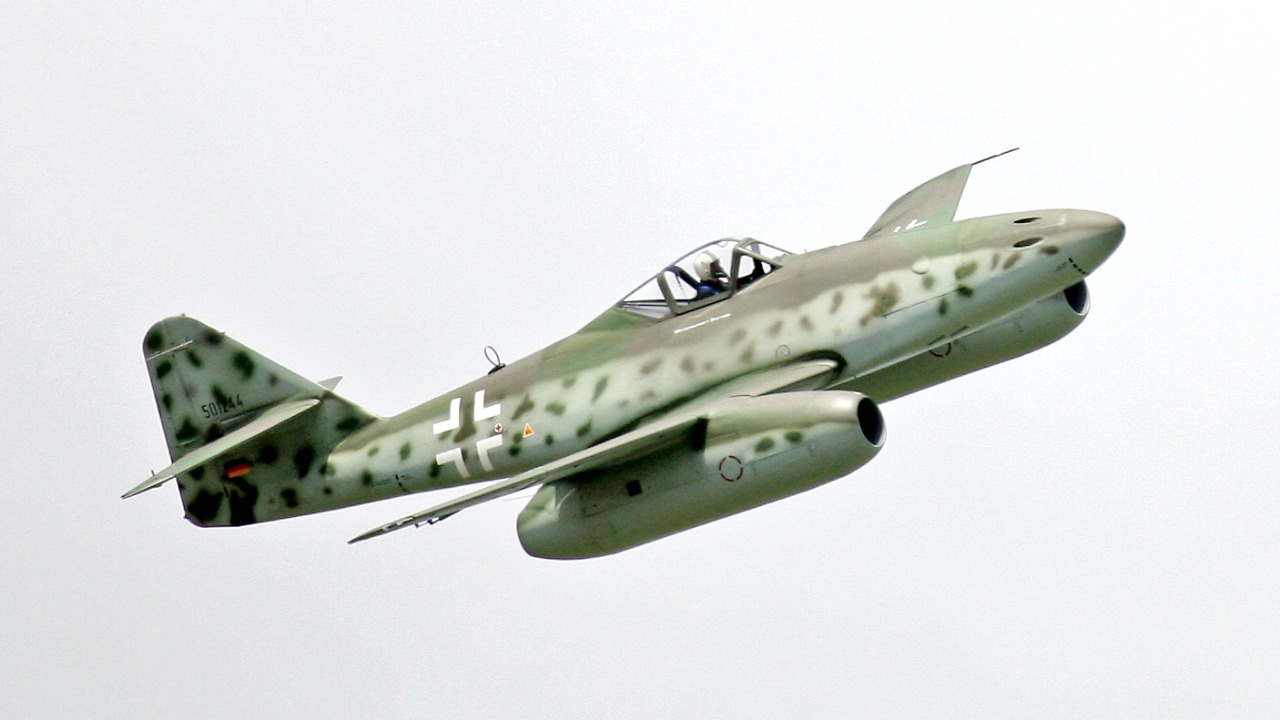
The development and design of the Me 262 represented a significant leap forward in aviation technology. At the heart of its innovation was the pioneering jet propulsion system. Unlike conventional propeller-driven aircraft, the Me 262 utilized jet engines that provided it with a remarkable speed advantage. This technological advancement was a product of German engineering prowess during a period when most aircraft were still dependent on piston engines. The Me 262’s sleek design, which minimized aerodynamic drag, further enhanced its ability to cut through the skies at speeds that were previously unimaginable. The combination of speed and advanced weaponry, including 30mm cannons, made it a formidable adversary in the air.
The strategic deployment of the Me 262 was carefully orchestrated by the Luftwaffe. Recognizing its potential as a game-changer in the air war over Europe, the Luftwaffe focused on using the Me 262 to disrupt Allied bombing raids. The jet fighter was initially deployed in a defensive role, tasked with intercepting Allied bombers before they could reach their targets. This deployment strategy highlighted the Luftwaffe’s intent to leverage the Me 262’s speed and firepower to challenge Allied air dominance. The initial encounters between Me 262s and Allied aircraft were marked by surprise and chaos, as Allied pilots were unprepared for the jet’s unprecedented speed and aggressive tactics.
The Ambush Tactics
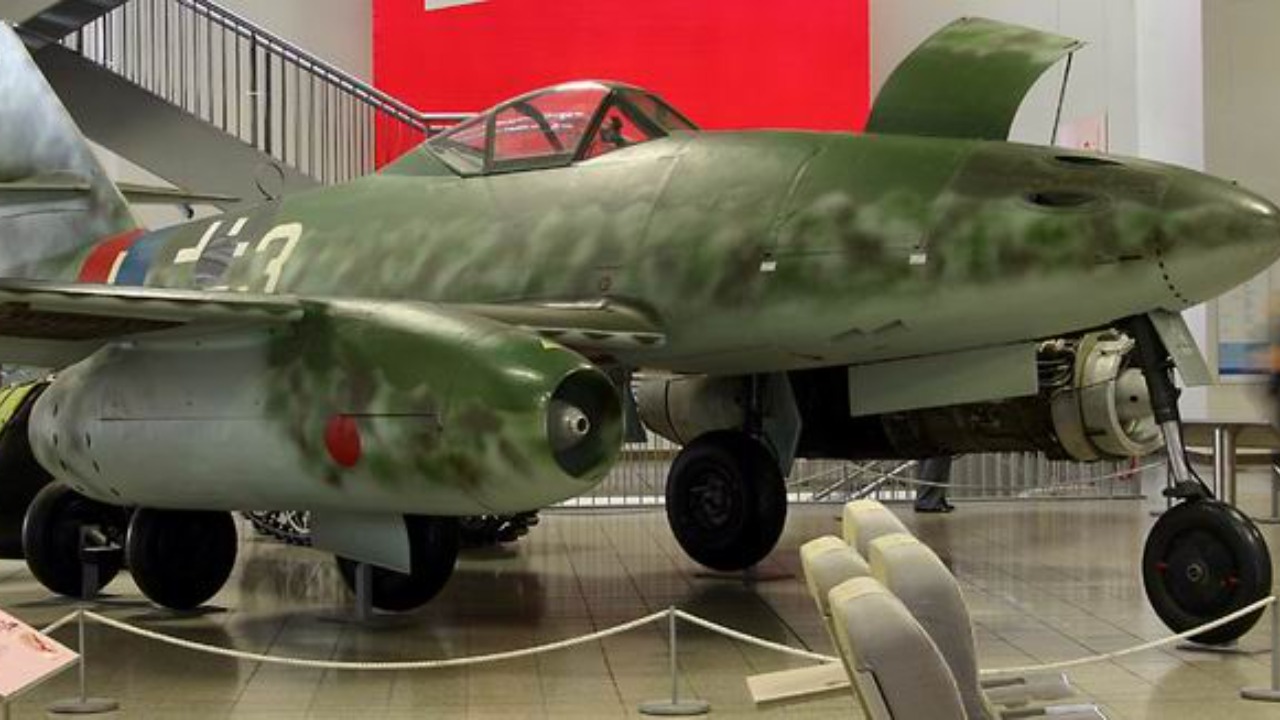
The Me 262’s ambush tactics were enabled by its speed and altitude advantages. Capable of flying faster and higher than any Allied fighter at the time, the Me 262 could approach its targets with an element of surprise. The German pilots would often dive from high altitudes, using gravity to gain additional speed before engaging Allied bombers. This tactic allowed them to execute quick strikes and then retreat before Allied escorts could effectively respond. The shock and awe of these ambushes had a significant psychological impact on Allied aircrews, who suddenly found themselves vulnerable to an enemy they could neither outmaneuver nor outpace
As the Luftwaffe sought to maximize the Me 262’s potential, their tactics evolved to better integrate the new technology. Initially, the Luftwaffe struggled with the operational challenges of deploying a jet-powered aircraft. Maintenance and fuel supply issues were common, but over time, they refined their strategies to mitigate these problems. The Luftwaffe experimented with different formations and ambush techniques, ultimately learning to coordinate attacks that capitalized on the Me 262’s speed and firepower. Despite these advancements, the integration of jet technology into their existing air force structure remained a formidable challenge.
Key engagements over the skies of Germany demonstrated the Me 262’s effectiveness and influence on air combat. One such operation involved a coordinated ambush on an Allied bomber formation, where multiple Me 262s attacked in waves, overwhelming the bomber defenses. These engagements underscored the Me 262’s potential to alter the course of air battles, forcing the Allies to reconsider their strategies and adapt to the new threat.
Allied Response and Adaptation
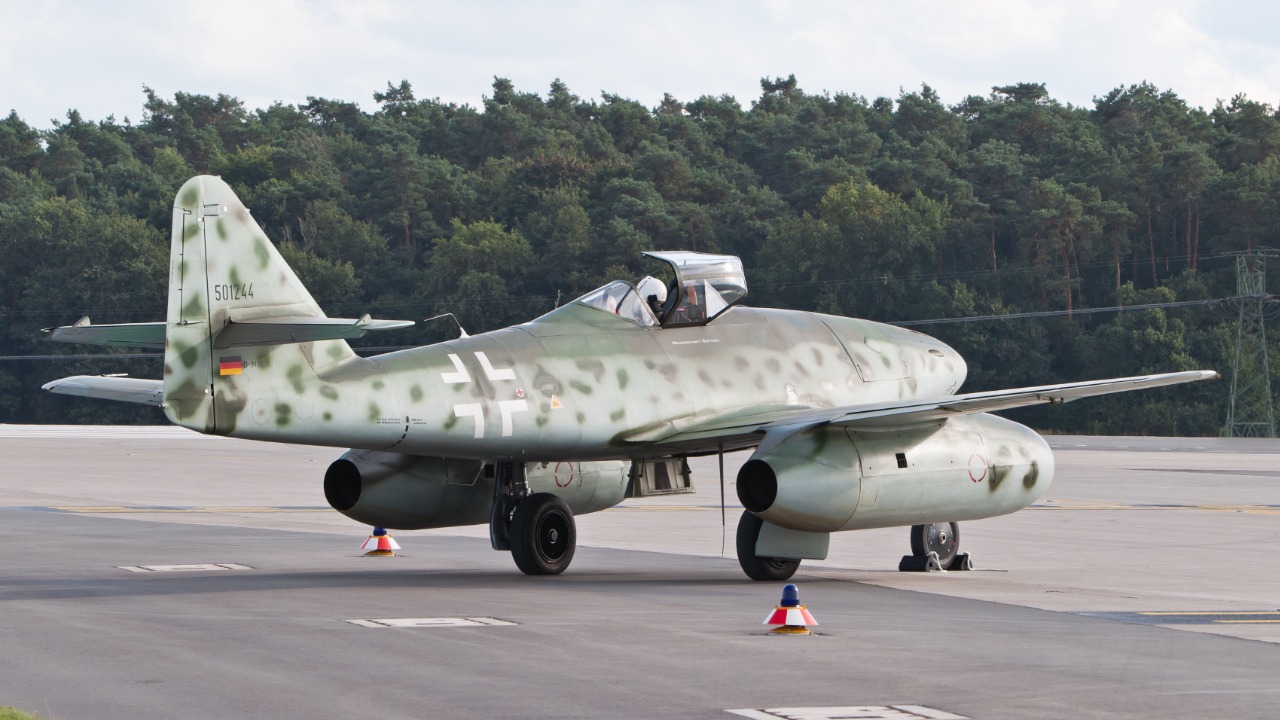
In response to the Me 262 threat, the Allies were forced to adapt their tactics and develop countermeasures. One of the key changes was in formation flying, where Allied bombers began flying tighter formations to concentrate their defensive firepower. Additionally, escort strategies were adjusted to provide better protection against the fast-approaching jets. The Allies also increased their focus on intelligence operations, aiming to identify and target Me 262 airfields to disrupt their operations.
Technological advancements were crucial in countering the Me 262’s superiority. The Allies accelerated the development of new aircraft, such as the P-51 Mustang, which, while still slower than the Me 262, could engage it under the right circumstances. Additionally, advancements in radar technology helped Allied forces detect and track the fast-moving jets, providing early warning and improving their chances of successful interception. Despite these efforts, the Me 262 remained a formidable challenge, requiring constant adaptation and innovation from the Allied forces.
Intelligence and strategy played a pivotal role in neutralizing the Me 262 threat. Allied intelligence agencies worked tirelessly to gather information on the locations and operations of Me 262 units. This intelligence allowed for targeted bombing raids on airfields and manufacturing facilities, disrupting production and limiting the operational capabilities of the German jet fighters. The strategic decisions made in response to the Me 262 highlighted the importance of intelligence in modern warfare and underscored the need for a comprehensive approach to countering new threats.
Long-term Implications for Air Combat
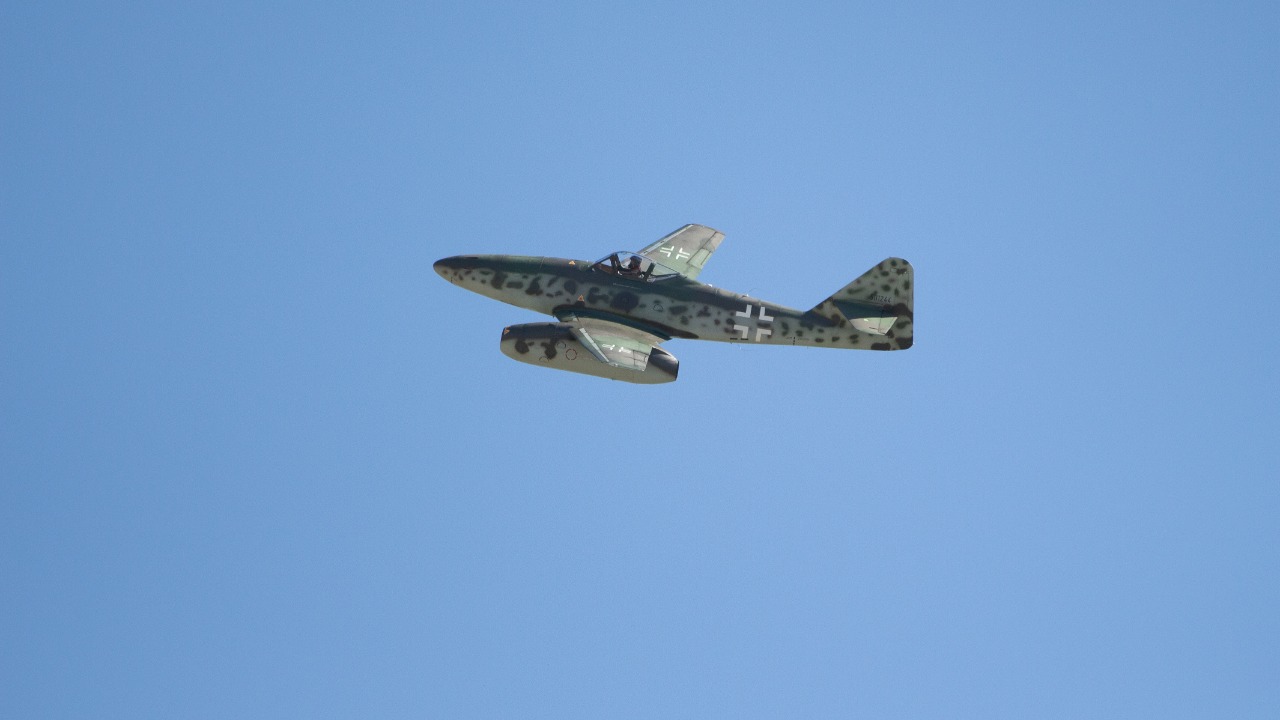
The introduction and ambush tactics of the Me 262 led to a fundamental shift in concepts of air superiority. The importance of speed and technology in air combat became increasingly apparent, influencing military strategies and aircraft design long after the war ended. The experiences gained from the Me 262’s deployment helped shape the development of post-war jet fighters, which prioritized speed, altitude, and advanced weaponry as key attributes.
The lessons learned from the Me 262’s deployment had a lasting impact on aviation. The jet fighter’s legacy can be seen in the design and strategy of modern military aircraft, which continue to evolve in response to new technological advancements. The Me 262 demonstrated the potential of jet propulsion and laid the groundwork for future innovations in aviation. Its historical significance is evident in the way it challenged traditional notions of air combat and set the stage for the rapid advancements that followed in the post-war era.
Reflecting on the historical significance of the Me 262 and its ambush tactics, it is clear that its legacy extends beyond its immediate impact on World War II. As one of the first operational jet fighters, the Me 262 paved the way for a new era in military aviation. Its introduction marked a turning point in air combat, demonstrating the transformative power of technology and innovation in shaping the future of warfare. The lessons learned from the Me 262 continue to resonate in modern military aviation history, serving as a reminder of the ever-evolving nature of air combat and the enduring quest for air superiority.